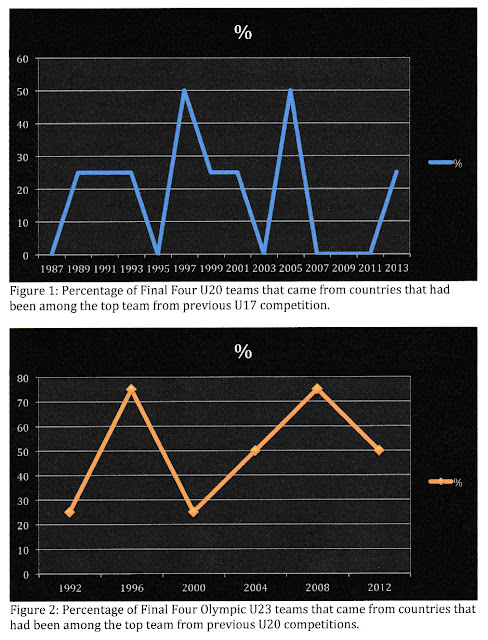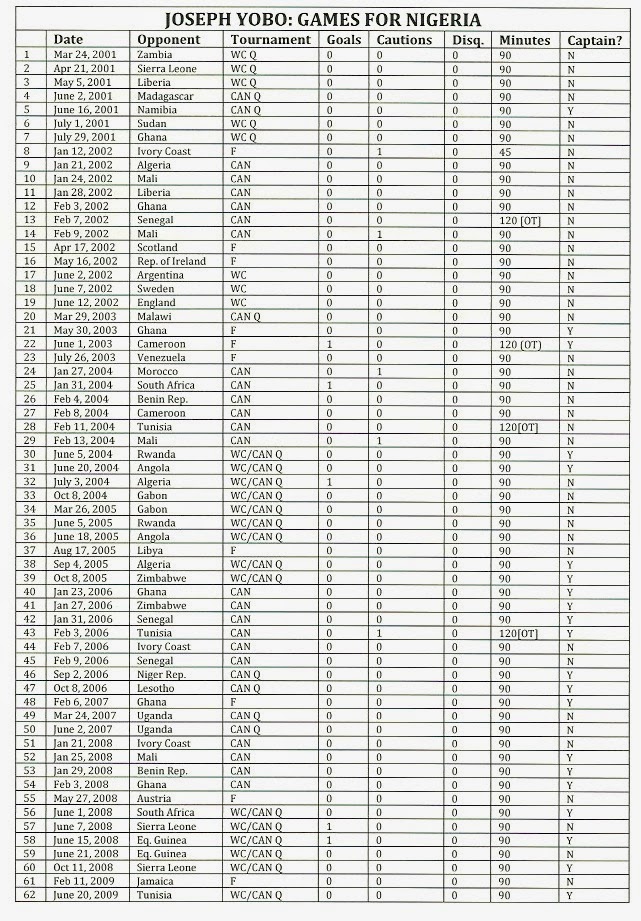Global Perspective: Exploring Youth Development Outcomes in Competitions
One of the goals of the Federation of International Football Associations (FIFA) is to develop youth football and improve the game at the senior national team level. Of course, many could argue that this has been achieved already with faster and better tactical and technical play at the most senior level.
However, one of the questions is whether there is a correlation between success at the lower youth level and success at the older levels. In essence, if a country performs well at a youth level, does that performance predict success at the higher level in a few years? In this piece, we explore that question. The result here is exploratory and must be interpreted with extreme caution as it does not meet with strict requirements of scientific study. For instance, we have not looked at team rosters in order to answer the question nor have we controlled for effects of extraneous variables. Instead, we simply compared data on teams that reached the semi-final stages (Top Four) of U17, U20, Olympics, and the World Cup. We predict that teams finishing in the Top Four in a U17 World Cup should finish in the Top Four in the U20, two years later, in order to infer successful effect. For the Olympics, we look at the effect of the two preceding Top Four finishes at the U20 level. For the World Cup, we look at the effect of the preceding Olympics. Underlying these assumptions is that the aging and continued improvement of players will lead to probable positive effect at the subsequent level of football.
The results are shown below with effects at three levels: The U20 level, Olympic level, and the national team level.
Effect at the U20 Level
The data shows results that are not definitive (Figure 1). Only in two competitions -- 1997 and 2005 -did the top four teams at the U20 competitions represent 50% of the top four teams from the U17 competitions in the previous years. For instance, Ghana and Argentina finished among the top four at the U17 level in 1995, and two years later, were among the top four at the U20 level. No country has won the U17 and proceeded, two years later, to win the U20! The only country to come closest to achieving this is Ghana. Ghana won the U17 in 1991 and reached the U20 final two years later losing to Brazil.
Effect at the Olympic (U-23 level)
Here, the results are better (Figure 2). The peak achievements occur at 75% levels for two competitions, unlike the U20 level. At every Olympics we have in the top four at least one team that finished in the top four at a preceding U20 competition. The top years are 1996 and 2008 Olympics. In 1996, Nigeria was the only team to finish top four that had not finished top four at the preceding U20 competitions. The other three teams - Argentina, Brazil, and Portugal - had done so. Here in lies a quirk in this study. The Nigerian team actually had on its roster (Remember rosters were not used for this report) several players who had been part of the 1993 victory at the U17 level! Thus, we must interprete the reports here with caution. Using actual rosters should make for a more definitive study.
Effect at the Senior Level
Ultimately, one would expect that results at the senior level will be better than the U23 level. However, that is not the case (Figure 3). In fact, the effect is weakest at this level with 25% being the best achievement effect in any World Cup year. The stranglehold of the senior World Cup, by a few countries, continue in spite of more distributed performance at the lower levels. Nevertheless, both the 1998 and 2006 World Cups saw at least one country finish at the top four after doing so at a recent Olympics. In 1998, it was Brazil and in 2006 it was Italy.



Comments
Post a Comment